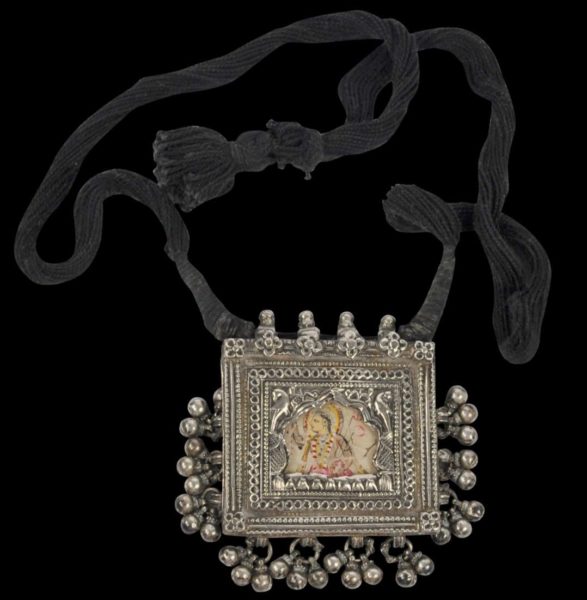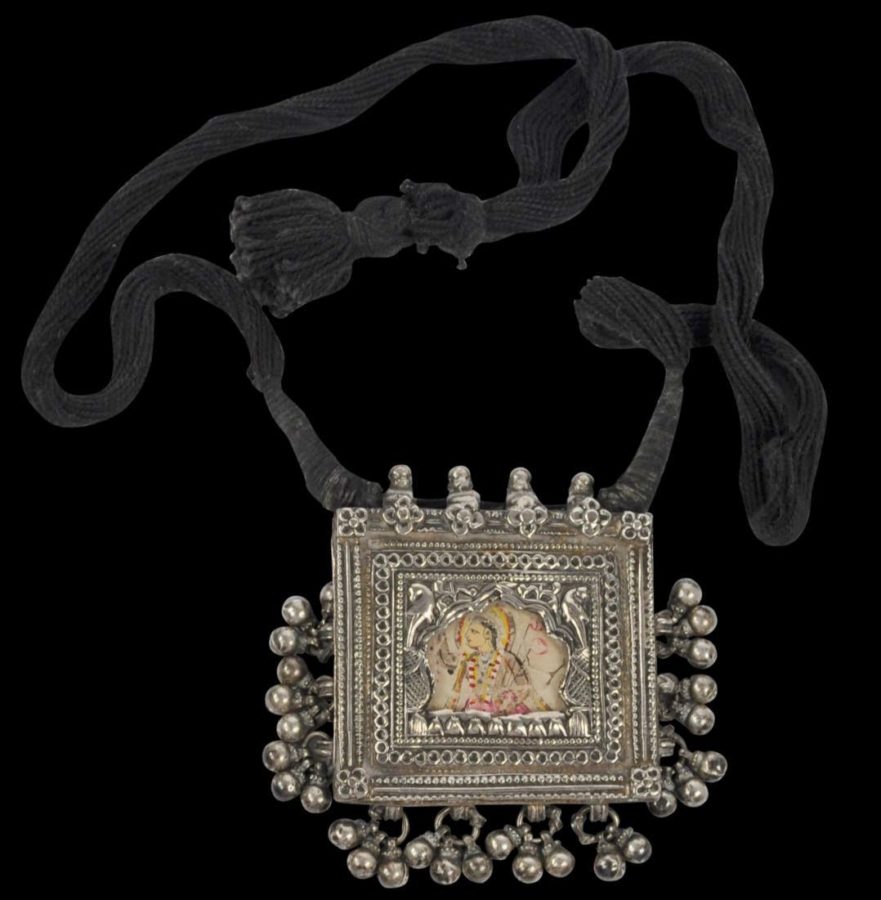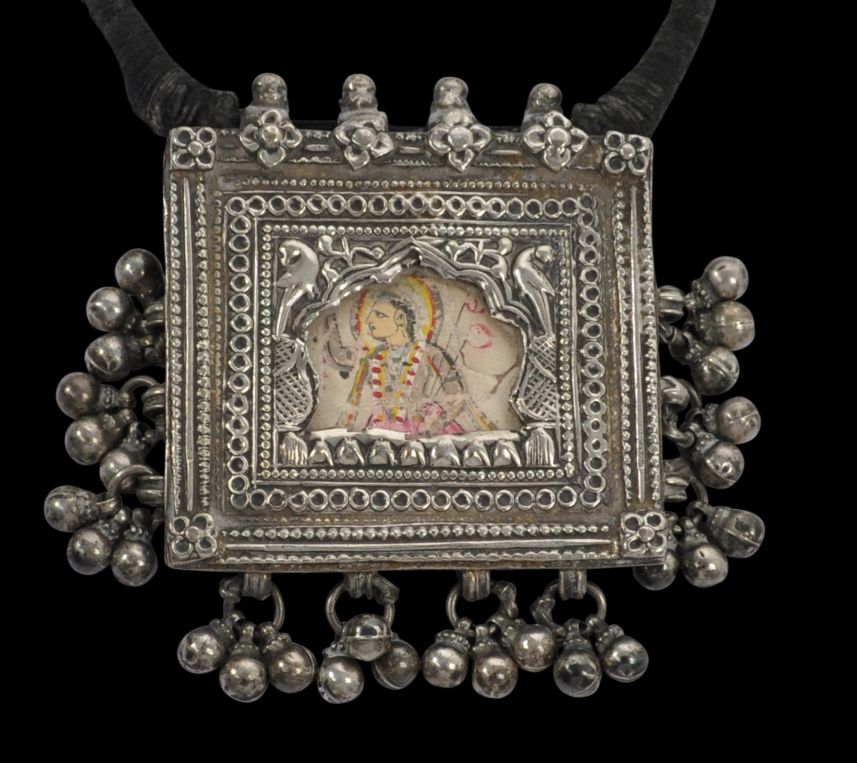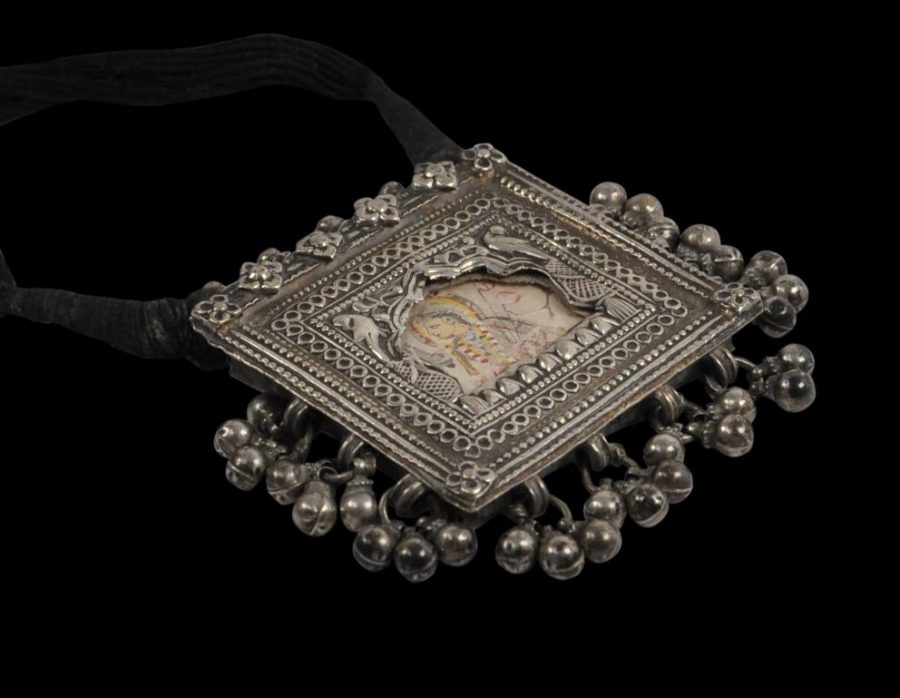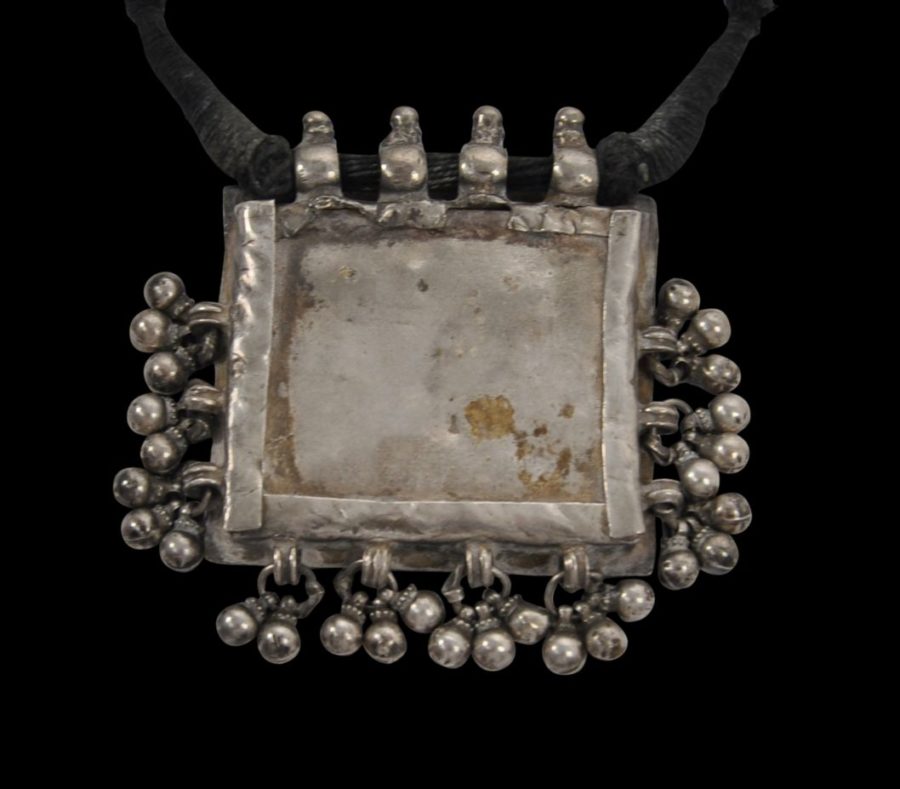Enquiry about object: 6344
Hindu Pilgrim’s Silver Amulet Pendant (Chhedi ka Jantar)
Rajasthan, India 19th century
dimension of amulet: 6.3cm x 7cm, weight: 77g
Provenance
UK art market
This beautiful and wearable amulet pendant suspended on what is probably an original multi-strand, black yarn necklace, is from Rajasthan and dates to the 19th century.
The amulet box is encased in sheet silver that has been chased on the front with parrot, flower and other motifs. Four eyelets at the top allow for suspension. Multiple silver spherical dangles (gajre) are suspended from the sides and the lower edge.
The front of the amulet has a hand-painted deity framed by the silver in a Rajput-style cusped arch, and beneath a thin sheet of glass.
The reverse of the amulet is enclosed with plain sheet silver.
Such an amulet most probably was acquired from the environs of a temple by a pilgrim and worn thereafter as a keepsake.
A related example is illustrated in Untracht (1997, p. 131).
Artists across Rajasthan produced miniature paintings from the 18th to the early 20th centuries, for pilgrims to temples. Many such paintings were incorporated into silver jewellery to provide adherents with a protective talisman that they could wear.
The piece has splendid patina; its contours have been worn smooth by wear, age and handling. Other than wear, the amulet is in fine condition.
References
Bowers, J., ‘Talisman Garlands: Painted mala from Rajastan’, in TAASA Review, Volume 30, no. 3, September 2021.
Untracht, O., Traditional Jewelry of India, Thames & Hudson, 1997.


